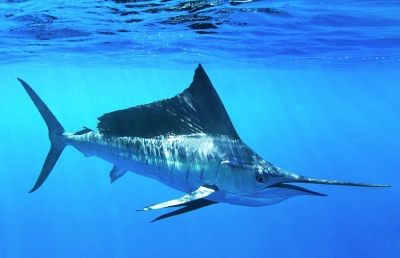
Sailfish, marlins and swordfish are part of the billfish family – all apex saltwater predators. Like marlins, the sailfish is one of the fastest fish in the ocean, reaching speeds of about 112 km/h!
It gets its name from its huge sail-like dorsal fin that allows it great manoeuvrability and speed in the water. It is able to retract this sail when required (much like the sail on a real ship!) and uses this fin as a shield to trap small prey and prevent them from escaping. Additionally, like the marlin, it uses its elongated bill to pierce and slash its prey! Its bill also allows it to cleave through the water and contributes to its streamlined shape.
It feeds on sardines, anchovies, squid and octopus. Females are much larger than the males. They can reach a length of about 3 metres and weigh up to 100 kg. They breed in large numbers and are not under much threat in the ocean from predators or humans. They are listed under ‘Least Concern’ in the IUCN List.
Sailfish are capable of changing their colour in order to communicate or while hunting prey. Often they will sneak up on unsuspecting fish before the prey sees it.
They are valued as game fish and are often caught for sport, not meat. They are often very difficult to reel in as they put up a fierce fight that may last for hours! One could say that these are one of the most redoubtable opponents that humans face in the ocean.
Picture Credit : Google





